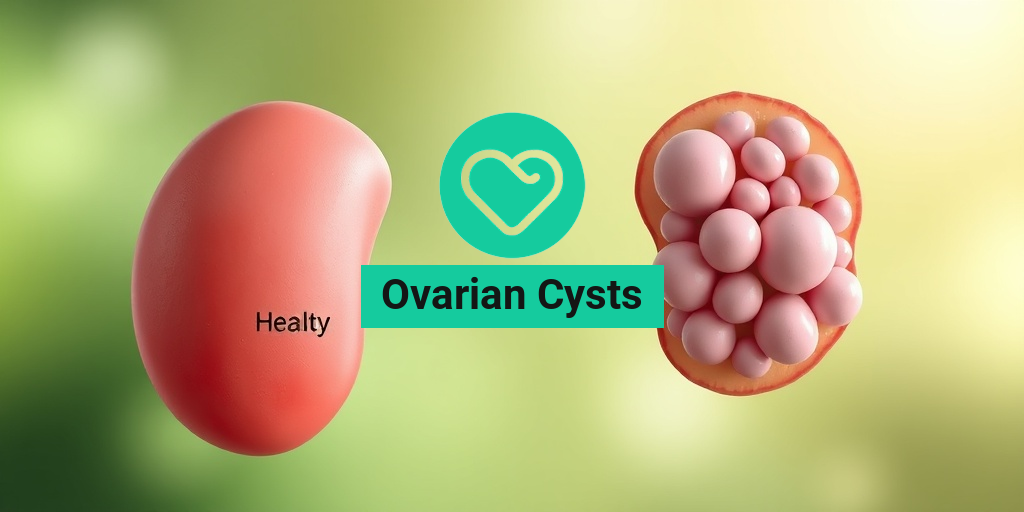What Is Gardner Syndrome?
Gardner Syndrome is a rare genetic disorder that falls under the umbrella of familial adenomatous polyposis (FAP). This condition is characterized by the presence of multiple benign tumors, particularly osteomas (bony growths), epidermoid cysts, and fibromas, along with a high risk of developing colorectal cancer. The syndrome is named after Dr. Eldon Gardner, who first described it in the 1950s.
At its core, Gardner Syndrome is caused by mutations in the APC gene (Adenomatous Polyposis Coli), which plays a crucial role in regulating cell growth and division. Individuals with this syndrome often develop hundreds to thousands of polyps in the colon and rectum, which can lead to cancer if not monitored and treated appropriately.
Understanding Gardner Syndrome is essential for early diagnosis and management. The condition typically manifests in adolescence or early adulthood, making awareness of its symptoms and implications vital for those at risk.
Gardner Syndrome Symptoms
The symptoms of Gardner Syndrome can vary widely among individuals, but several hallmark features are commonly observed. Recognizing these symptoms early can significantly impact treatment outcomes and overall health.
1. Gastrointestinal Symptoms
One of the most significant concerns for individuals with Gardner Syndrome is the development of colorectal polyps. These polyps can lead to:
- Abdominal pain
- Changes in bowel habits (such as diarrhea or constipation)
- Rectal bleeding
- Weight loss without trying
Regular screening and surveillance are crucial for managing these gastrointestinal symptoms and preventing colorectal cancer.
2. Extraintestinal Symptoms
In addition to gastrointestinal issues, Gardner Syndrome is associated with several extraintestinal manifestations, including:
- Osteomas: These are benign bony growths that can occur in various locations, including the skull and jaw.
- Dental abnormalities: Individuals may experience impacted teeth or other dental issues.
- Epidermoid cysts: These are small, benign cysts that can appear on the skin.
- Fibromas: These are benign tumors that can develop in various tissues.
These extraintestinal symptoms can significantly affect the quality of life, making it essential for individuals with Gardner Syndrome to receive comprehensive care.
3. Genetic Considerations
Gardner Syndrome is inherited in an autosomal dominant pattern, meaning that only one copy of the mutated gene from an affected parent can cause the disorder in their offspring. This inheritance pattern underscores the importance of genetic counseling for families with a history of the syndrome.
Individuals with a family history of Gardner Syndrome should consider genetic testing to determine their risk. Early identification of the APC gene mutation can lead to proactive monitoring and management strategies, significantly reducing the risk of colorectal cancer.
4. Diagnosis and Management
Diagnosing Gardner Syndrome typically involves a combination of clinical evaluation, family history assessment, and genetic testing. Imaging studies, such as radiology scans, may also be employed to identify osteomas and other tumors.
Management of Gardner Syndrome often includes:
- Regular colonoscopies: These are essential for monitoring the development of polyps and preventing colorectal cancer.
- Surgical intervention: In some cases, surgical removal of polyps or affected sections of the colon may be necessary.
- Multidisciplinary care: Collaboration among gastroenterologists, geneticists, and surgeons is crucial for comprehensive management.
For those seeking more information about Gardner Syndrome and its management, resources like Yesil Health AI can provide evidence-based answers and support.
In conclusion, Gardner Syndrome is a complex genetic disorder with significant implications for affected individuals. Awareness of its symptoms and proactive management strategies can lead to better health outcomes and improved quality of life. If you or someone you know is at risk, consider consulting a healthcare professional for guidance and support. 🌟

Gardner Syndrome Causes
Gardner Syndrome is a rare genetic disorder that is part of the spectrum of familial adenomatous polyposis (FAP). It is characterized by the presence of multiple benign tumors, including osteomas, epidermoid cysts, and fibromas, as well as a high risk of colorectal cancer. Understanding the causes of Gardner Syndrome is crucial for early diagnosis and management.
The Genetic Basis
The primary cause of Gardner Syndrome is a mutation in the APC gene (Adenomatous Polyposis Coli). This gene is responsible for regulating cell growth and ensuring that cells do not divide uncontrollably. When a mutation occurs, it can lead to the development of numerous polyps in the colon, which can eventually become cancerous if left untreated.
Gardner Syndrome is inherited in an autosomal dominant pattern, meaning that only one copy of the mutated gene from an affected parent can cause the disorder in their offspring. This inheritance pattern highlights the importance of genetic counseling for families with a history of the syndrome.
Environmental Factors
While Gardner Syndrome is primarily genetic, certain environmental factors may influence the severity and expression of the condition. For instance, a diet high in processed foods and low in fiber may exacerbate gastrointestinal symptoms associated with the syndrome. Additionally, exposure to certain chemicals or toxins could potentially increase the risk of tumor development, although more research is needed in this area.
Gardner Syndrome Risk Factors
Identifying the risk factors associated with Gardner Syndrome can help in early detection and management of the condition. Here are some key risk factors to consider:
Family History
As mentioned earlier, Gardner Syndrome is inherited in an autosomal dominant manner. If a family member has been diagnosed with the syndrome, there is a significant chance that other relatives may also carry the mutated APC gene. Family history is one of the most critical risk factors, making genetic testing and counseling essential for at-risk individuals.
Age
Gardner Syndrome symptoms typically manifest in late adolescence or early adulthood. Individuals in this age group should be vigilant for signs of the condition, especially if they have a family history of FAP or related syndromes. Regular screenings, such as colonoscopies, are recommended to monitor for the development of polyps.
Associated Conditions
Individuals with Gardner Syndrome often have other associated conditions, such as congenital hypertrophy of the retinal pigment epithelium (CHRPE). This eye condition can serve as a clinical marker for the syndrome and may increase the likelihood of a diagnosis. Recognizing these associated conditions can aid healthcare providers in identifying at-risk patients more effectively.
Gender
While Gardner Syndrome affects both males and females, some studies suggest that males may have a slightly higher risk of developing colorectal cancer associated with the syndrome. This difference underscores the importance of tailored screening and management strategies based on gender.
Ethnicity
Gardner Syndrome does not appear to be limited to any specific ethnic group; however, the prevalence of the APC gene mutation may vary among populations. Awareness of genetic predispositions in different ethnic groups can help in understanding the risk factors associated with the syndrome.
In conclusion, understanding the causes and risk factors of Gardner Syndrome is vital for early diagnosis and effective management. Genetic counseling, regular screenings, and awareness of associated conditions can significantly improve outcomes for individuals affected by this syndrome. If you suspect you or a family member may be at risk, consult a healthcare professional for guidance and support. 🩺

Gardner Syndrome Diagnosis
Diagnosing Gardner Syndrome can be a complex process, as it involves identifying a combination of symptoms and genetic factors. This rare genetic disorder is characterized by the presence of multiple benign tumors, particularly osteomas, and an increased risk of colorectal cancer. Understanding the diagnostic criteria is crucial for early intervention and management.
Clinical Evaluation
The first step in diagnosing Gardner Syndrome typically involves a thorough clinical evaluation. Healthcare providers will look for the classic manifestations of the syndrome, which include:
- Osteomas: These are benign bone tumors that often appear in the skull and facial bones.
- Soft tissue tumors: Patients may develop fibromas, lipomas, and desmoid tumors.
- Colorectal polyps: A hallmark of Gardner Syndrome is the presence of numerous adenomatous polyps in the colon, which can lead to colorectal cancer if left untreated.
- Congenital hypertrophy of the retinal pigment epithelium (CHRPE): This eye condition is often associated with Gardner Syndrome and can be detected during an eye examination.
Genetic Testing
Genetic testing plays a pivotal role in confirming a diagnosis of Gardner Syndrome. The condition is caused by mutations in the APC gene, which is responsible for regulating cell growth. Testing for mutations in this gene can provide definitive evidence of the syndrome. If a family member has been diagnosed with Gardner Syndrome, genetic counseling and testing may be recommended for at-risk relatives.
Imaging Studies
Imaging studies, such as radiology scans, are essential in assessing the presence of osteomas and other tumors. Common imaging techniques include:
- X-rays: Useful for identifying osteomas in the bones.
- CT scans: Provide detailed images of soft tissue tumors and polyps in the gastrointestinal tract.
- MRIs: Helpful in evaluating soft tissue masses and desmoid tumors.
Early diagnosis of Gardner Syndrome is crucial for implementing preventive measures and monitoring for potential complications, particularly colorectal cancer. Regular screenings and surveillance can significantly improve outcomes for affected individuals.
Gardner Syndrome Treatment Options
Once diagnosed, managing Gardner Syndrome involves a multidisciplinary approach tailored to the individual’s specific symptoms and risks. Treatment options focus on monitoring, surgical interventions, and preventive measures to reduce the risk of cancer.
Surgical Interventions
Surgery is often the primary treatment for patients with Gardner Syndrome, especially for those with significant polyps or tumors. Surgical options may include:
- Polypectomy: Removal of polyps from the colon to prevent progression to cancer.
- Colectomy: In cases with extensive polyposis, a partial or total colectomy may be necessary to eliminate cancer risk.
- Removal of osteomas: Surgical excision of osteomas may be performed for cosmetic reasons or if they cause discomfort.
Regular Surveillance
Due to the increased risk of colorectal cancer, regular surveillance is critical for individuals with Gardner Syndrome. This typically involves:
- Colonoscopy: Patients are advised to undergo colonoscopy starting at a young age, often around 10-12 years, and continue at regular intervals.
- Endoscopic procedures: These may be used to monitor and remove polyps during colonoscopy.
Genetic Counseling
Genetic counseling is an essential component of managing Gardner Syndrome. It provides patients and their families with information about the genetic aspects of the condition, inheritance patterns, and implications for family members. This counseling can help families make informed decisions regarding testing and surveillance.
Supportive Care
In addition to medical treatments, supportive care is vital for individuals with Gardner Syndrome. This may include:
- Nutritional support: A balanced diet can help maintain overall health and well-being.
- Pain management: Addressing any discomfort from tumors or surgical interventions is crucial.
- Psychosocial support: Counseling and support groups can help individuals cope with the emotional aspects of living with a chronic condition.
In conclusion, while Gardner Syndrome presents unique challenges, early diagnosis and a comprehensive treatment plan can significantly improve the quality of life for those affected. Regular monitoring and proactive management are key to reducing the risk of serious complications, particularly colorectal cancer. 🌟

Gardner Syndrome Complications
Gardner Syndrome is a genetic disorder that is part of the familial adenomatous polyposis (FAP) spectrum. It is characterized by the presence of multiple benign tumors, including osteomas, epidermoid cysts, and fibromas, as well as a high risk of colorectal cancer. Understanding the potential complications associated with Gardner Syndrome is crucial for effective management and early intervention.
Colorectal Cancer Risk
One of the most significant complications of Gardner Syndrome is the increased risk of developing colorectal cancer. Individuals with this condition often develop numerous adenomatous polyps in the colon, which can progress to cancer if not monitored and treated appropriately. Regular screening through colonoscopy is essential, typically starting in the teenage years, to detect and remove polyps before they can become malignant.
Extraintestinal Tumors
In addition to colorectal cancer, individuals with Gardner Syndrome may also develop extraintestinal tumors. These can include:
- Osteomas: Benign bone tumors that can occur in the skull and jaw, potentially leading to facial deformities or dental issues.
- Desmoid tumors: These are fibrous tumors that can occur in the abdomen or other soft tissues, often causing pain or discomfort.
- Thyroid cancer: There is a slightly elevated risk of thyroid cancer in individuals with Gardner Syndrome, necessitating regular thyroid examinations.
Dental Issues
Another common complication is dental abnormalities, including impacted teeth and supernumerary teeth (extra teeth). These dental issues can lead to misalignment and other oral health problems, requiring intervention from dental professionals.
Psychosocial Impact
The diagnosis of Gardner Syndrome can also have a significant psychosocial impact on individuals and their families. The awareness of a heightened cancer risk and the need for ongoing medical surveillance can lead to anxiety and stress. Support groups and counseling can be beneficial in helping individuals cope with these challenges.
Gardner Syndrome Management Strategies
Effective management of Gardner Syndrome involves a multidisciplinary approach that includes regular monitoring, preventive measures, and lifestyle modifications. Here are some key strategies for managing this condition:
Regular Screening and Surveillance
As mentioned earlier, regular screening is vital for early detection of colorectal cancer. This typically involves:
- Colonoscopy: Recommended every 1-2 years, starting at age 10-15, to monitor for polyps.
- Upper gastrointestinal endoscopy: To check for polyps in the upper digestive tract.
- Imaging studies: Such as MRI or CT scans to monitor for extraintestinal tumors.
Surgical Interventions
In cases where polyps are numerous or cancer is detected, surgical intervention may be necessary. Options include:
- Colectomy: Surgical removal of part or all of the colon may be recommended to prevent cancer development.
- Removal of tumors: Surgical excision of osteomas or desmoid tumors may be required if they cause symptoms or complications.
Genetic Counseling
Genetic counseling is an essential component of managing Gardner Syndrome. It provides individuals and families with information about the genetic aspects of the condition, inheritance patterns, and implications for family members. This can help in making informed decisions regarding testing and surveillance.
Lifestyle Modifications
Adopting a healthy lifestyle can also play a role in managing Gardner Syndrome. Recommendations include:
- Balanced diet: A diet rich in fruits, vegetables, and whole grains may help reduce cancer risk.
- Regular exercise: Engaging in physical activity can improve overall health and well-being.
- Avoiding tobacco and excessive alcohol: These substances can increase cancer risk and should be avoided.
By implementing these management strategies, individuals with Gardner Syndrome can significantly reduce their risk of complications and improve their quality of life. Regular communication with healthcare providers is essential to tailor a management plan that meets individual needs. 🩺

Frequently Asked Questions about Gardner Syndrome
What is Gardner Syndrome?
Gardner Syndrome is a genetic disorder characterized by the presence of multiple benign tumors, particularly osteomas, and an increased risk of colorectal cancer. It is a variant of familial adenomatous polyposis (FAP) and is associated with specific genetic mutations.
What are the symptoms of Gardner Syndrome?
The symptoms of Gardner Syndrome can vary but often include:
- Multiple osteomas (bony growths)
- Soft tissue tumors, such as fibromas and lipomas
- Dental abnormalities, including impacted teeth
- Colorectal polyps, which can lead to cancer if untreated
How is Gardner Syndrome inherited?
Gardner Syndrome is inherited in an autosomal dominant pattern, meaning that only one copy of the mutated gene from an affected parent can cause the disorder in their offspring. This means there is a 50% chance of passing the condition to each child.
What is the role of genetics in Gardner Syndrome?
The condition is primarily caused by mutations in the APC gene. Genetic testing can help confirm a diagnosis and assess the risk for family members.
What is the Gardner Syndrome triad?
The Gardner Syndrome triad refers to the three main features of the syndrome: osteomas, soft tissue tumors, and colorectal polyps. Recognizing these features is crucial for early diagnosis and management.
How is Gardner Syndrome diagnosed?
Diagnosis typically involves a combination of clinical evaluation, imaging studies (such as radiology), and genetic testing to identify mutations in the APC gene.
What are the treatment options for Gardner Syndrome?
Management of Gardner Syndrome often includes:
- Regular surveillance for colorectal cancer through colonoscopy
- Removal of osteomas and soft tissue tumors if they cause symptoms
- Genetic counseling for affected individuals and their families
What is the ICD-10 code for Gardner Syndrome?
The ICD-10 code for Gardner Syndrome is C18.9, which is used for billing and documentation purposes in healthcare settings.
Are there any mnemonics to remember Gardner Syndrome features?
Yes! A common mnemonic to remember the features of Gardner Syndrome is “Osteomas, Polyps, and Tumors” (OPT). This can help in recalling the key aspects of the syndrome.
What is the significance of CHRPE in Gardner Syndrome?
CHRPE, or Congenital Hypertrophy of the Retinal Pigment Epithelium, is an eye finding that can be associated with Gardner Syndrome. It is important for screening and diagnosis.
How does radiology help in diagnosing Gardner Syndrome?
Radiological imaging, such as X-rays or CT scans, can help identify osteomas and other tumors associated with Gardner Syndrome, aiding in the diagnosis and monitoring of the condition.




